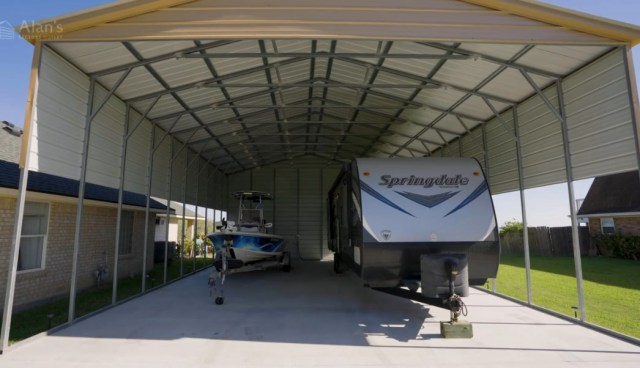Owning an RV is truly a blessing, isn’t it? It’s your home away from home, always ready to carry you toward new horizons and let you soak in the beauty of this vast country. But that RV represents a lot of money, sweat, and tears. Like any cherished possession, keeping it safe and sound is a top priority.
But how do you protect your RV when Mother Nature strikes?
The relentless sun, sudden hailstorms, powerful hurricanes, and even unwelcome critters can all lead to potential damage. Finding faded paint, discovering a leak, or worse, seeing dents from hail means facing potentially costly repairs, and that’s a headache nobody needs on their travels.
But don’t you worry! This guide packs a punch of practical advice and proactive steps to help you learn how to protect your RV from sun damage, hail, and other risks. We’ll walk through everything from simple steps you can implement immediately to more permanent solutions, all aimed at giving you peace of mind for your adventures ahead.
How does sunlight damage your RV? Understanding UV Damage and Heat Damage
Sunshine might feel good. However, direct sunlight can be surprisingly tough on your RV over time.
The main culprits?
UV damage and heat damage, resulting from continuous exposure. Imagine those invisible ultraviolet rays (UV light) constantly working away at your RV’s exterior surfaces.
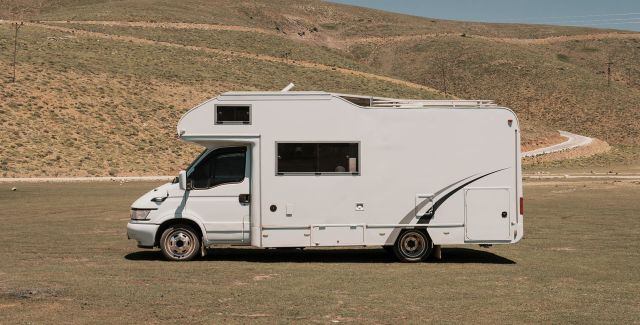
Well, those rays cause:
- Vibrant paint colors like red, orange, yellow, and even bright blues to fade and lose their luster.
- Decals to crack and peel off.
- Various exterior roof materials, like plastic vent covers or seals around windows, degrade.
This weakening, particularly on the RV roof, can eventually lead to water damage through leaks. The heat itself can also cause various issues. Black streaks can appear when the sun bakes grime onto the surface, and heat damage can occur inside, like warped dashboards, faded fabrics, and brittle plastics.
How to Protect Your RV from Sun Damage: Preventing Heat and UV Damage
Knowing the sun can be harsh is one thing; taking action about it is another. Thankfully, there are effective strategies for combating sun damage. Learning how to protect your RV from the sun mainly involves blocking those rays and controlling heat. Let’s explore some reliable ways to provide UV protection for your rolling home.
Install an RV Shelter at Home: The Best Layer of Protection
Want the absolute best defense against exposure to UV rays? Get your RV under cover. Nothing beats physical shade. Investing in a durable metal RV carport or a fully enclosed RV garage puts a solid roof between the sun and your vehicle.
A sturdy structure, like the high-quality metal buildings from Alan’s Factory Outlet, offers complete protection right on your property. It shields the paint, the RV roof, the tires—everything—year-round.
Buy a Portable RV Cover (Protective Cover)
Of course, a permanent structure isn’t always an option, particularly when traveling or if you don’t have lots of space at home. In these cases, a high-quality RV cover serves as a valuable protective shield against UV radiation. Think of it as a heavy-duty jacket for your RV.
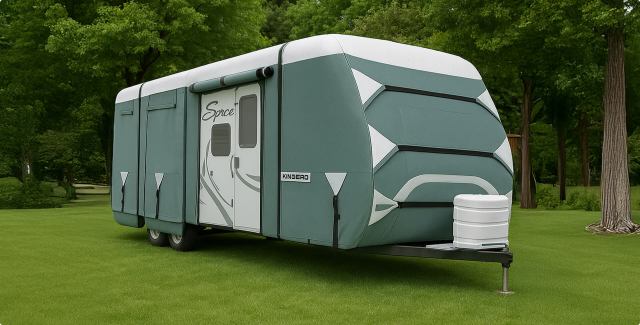
You’ll find various cover material choices, ranging from breathable fabric covers to simpler shade cloth options. Look for features like breathability and zippered panels for easy interior access. While requiring more effort than simply parking underneath an RV shelter, a good camper cover offers a solid protective layer against sun, dust, and messy bird droppings.
Apply UV Protection Film on Windows
A significant amount of heat and damaging radiation enters through the RV’s windows. Applying a specialized UV protection film is a relatively simple step that pays off in a big way. This film acts much like sunglasses for your RV’s interior.
By blocking ultraviolet rays, these films help keep the inside cooler and drastically reduce the fading of curtains, furniture fabrics, and dashboard materials.
Keep Your RV Clean and Polished with UV Protection Wax or Ceramic Coating
Regular washing is important, as it removes dirt that the sun can bake onto the finish, worsening those black streaks. But waxing takes protection up a notch. Using a high-quality wax, or better yet, a ceramic coating with UV protection, adds a crucial protective layer.
This sacrificial wax layer or ceramic coat bears the brunt of UV exposure, helping your paint retain its color and shine longer. It’s also key to maintaining your RV’s overall aesthetic appeal.
Cover Your RV Tires
Don’t let your tires bake in the sun! Rubber degrades significantly when exposed to constant sunlight. Those UV rays cause sidewall cracking, drying out the rubber, and increasing the risk of a dangerous blowout down the road.
Whenever your RV is parked for an extended period, make it a habit to put on tire covers to extend their life and enhance your safety.
Cover Your Windows from the Inside Using Window Shades
Working from the inside helps, too! Using reflective window shades, heavy curtains, or simply closing the existing blinds blocks direct sunlight, effectively reducing sun damage.
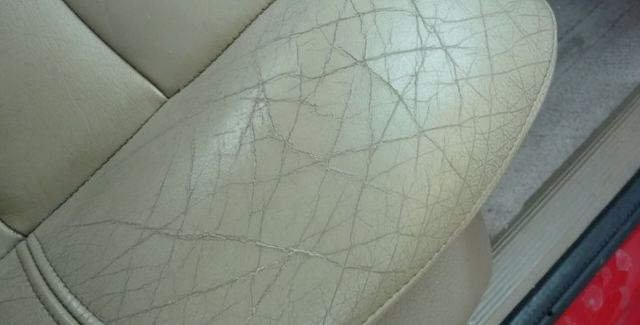
Keep Your RV’s Interior Clean and Conditioned
UV exposure through windows over a long period of time, combined with high temperatures, can dry out dashboards, leather seats, and vinyl trim. Treat these surfaces regularly with appropriate conditioners. It’ll keep materials flexible and prevent cracking.
Optimize Humidity and Ventilation
An RV closed up tightly, especially under a cover or during humid weather, can trap moisture. You don’t want that musty odor and potential mold growth. Proper garage ventilation is key.
Crack open your roof vents slightly (if they’re shielded from rain) or install vent covers designed to allow airflow while closed. If there’s too much moisture in the air, you can even run a small dehumidifier or install a garage exhaust fan to help.
Maintain Your RV Roof and Seals with Roof Sealant
The RV roof endures the most intense sun exposure. Therefore, regularly inspecting seams and the seals around vents, air conditioners, and roof edges is vital.
Sun and heat break down roof sealant over time, regardless of whether you have a rubber roof or other roofing materials.
Touch up or reapply the sealant as recommended by your RV manufacturer to avoid potential problems. Diligence is your best defense against leaks and costly water damage.
How to Protect Your RV from Hail: No More Dents or Camper Hail Damage
Unlike the slow progression of sun damage, hail arrives suddenly and can be incredibly destructive. Falling ice chunks can inflict severe damage, such as camper hail damage, rapidly covering your RV with dents, cracking plastic components like roof vents or solar panels, and even shattering windows. The aftermath often results in expensive repairs.
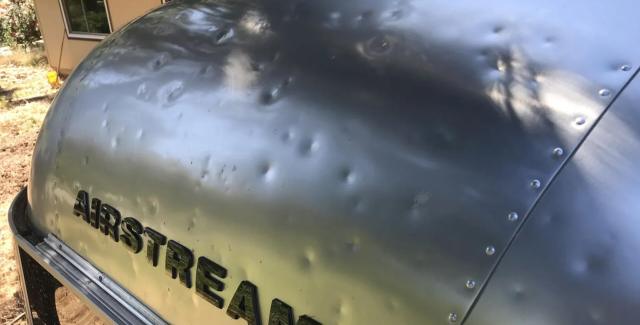
Because hail can develop quickly, protection requires planning. Here’s how to protect your RV from hail.
Park Your RV Inside an Enclosed Metal Carport or Garage
Without a doubt, the most effective shield against hail is solid overhead protection. However, remember that hail is often driven by wind, meaning it doesn’t fall straight down. A simple carport might protect the roof but leave the sides vulnerable.

For the best defense, nothing beats a fully enclosed, sturdy metal garage. Tough structures, such as the customizable RV garages available from Alan’s Factory Outlet, are designed to withstand impacts and protect your entire vehicle from hail damage. Investing in one is the most effective way to avoid the stress and expense of camper hail damage.
Use a Padded or High-Quality RV Cover as a Secondary Option
What if you’re caught away from a solid shelter when a hail warning pops up?
You can find specialized padded RV covers that offer some cushioning. However, even a very thick, high-quality RV cover might mitigate the damage somewhat. Keep in mind that these covers are not designed to withstand major impacts, such as heavy hail, and are not a guaranteed solution.
How to Protect Your RV from a Hurricane (RV Hurricane)
Hurricanes pose a significant threat, especially to those in the Southeastern states. Residents of Florida, Texas, Louisiana, Mississippi, Alabama, Georgia, and the Carolinas are at the greatest risk, according to FEMA.

An RV in a hurricane situation brings multiple dangers: extremely strong winds (potentially exceeding 100 miles per hour), flooding from heavy rain (a major risk in low-lying areas), and debris turned into dangerous projectiles.
Proper hurricane prep is essential.
Here’s how to protect your RV from a hurricane:
Have an Evacuation Plan and Know Your Evacuation Route
The best solution to protect your RV from a hurricane is to move it out of harm’s way. The US has a robust hurricane warning system run by the National Hurricane Center (NHC), which is part of the National Oceanic and Atmospheric Administration (NOAA).
When the NHC issues a hurricane warning, the safest course is usually to leave the area entirely well ahead of the storm’s arrival.
Carefully map your evacuation route to your destination in advance. Good options may include heading inland to stay with relatives or finding a safe campground outside the projected impact zone.
Park Inside a Sturdy Garage or Storage Facility If Staying Local
If evacuating isn’t feasible or you must leave the RV behind, securing it in the best possible location is critical. The ideal spot is within a sturdy, enclosed structure designed to withstand harsh weather conditions, preferably located away from flood-prone zones or identified low-lying areas.
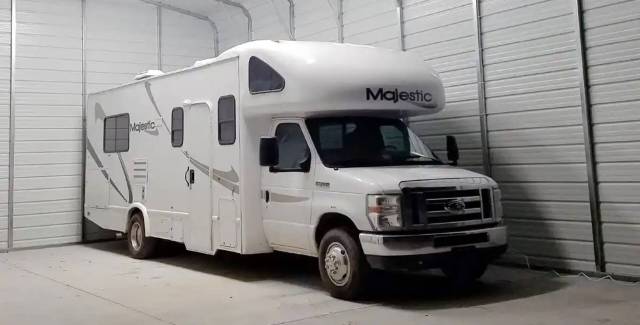
While a strong, brick-and-mortar garage is ideal, a well-built metal garage can also do the trick. Just make sure it’s certified to the proper wind rating. For example, Alan’s Factory Outlet offers durable models rated for 150 mph winds, which can be upgraded to withstand 170 mph winds.
Deploy Leveling Jacks for Stability
If your RV must face the storm outdoors, deploying its leveling or stabilizing jacks provides important extra stability. Doing so helps brace the vehicle against the powerful force of strong winds. Ensure you place the jacks on solid ground or support pads.
Install Strong Window Covers Like Plywood
Windows are extremely vulnerable during a hurricane. If the RV will be exposed, protect it by securely covering each one with thick plywood (at least 5/8 inches thick). These covers should be cut to size and firmly bolted or screwed into place—tape alone will not suffice against debris impact.
Anchor Your RV to the Ground
High winds can shift or even overturn an RV. To combat this, anchor it securely if it must remain outside. Use heavy-duty ratchet straps passed over the RV’s frame (avoiding axles or suspension parts) and connected to specialized ground anchors screwed deep into the soil. Standard camping tie-downs or simple bungee cords lack the strength needed for hurricane winds.
Retract Slides and Awnings
Tuck in anything that sticks out to reduce the RV’s profile to the wind as much as possible. Retract all slide-outs, roll up awnings completely, and secure them tightly against the RV’s body to prevent wind from catching and tearing them off.
How to Protect Your RV from Insects, Rodents, and Other Pests
Severe weather is one thing, but what about little critters? These smaller nuisances can cause real headaches. Insects, mice, squirrels, and even accumulated bird droppings can lead to surprising potential damage, particularly when an RV sits in storage for an extended period.
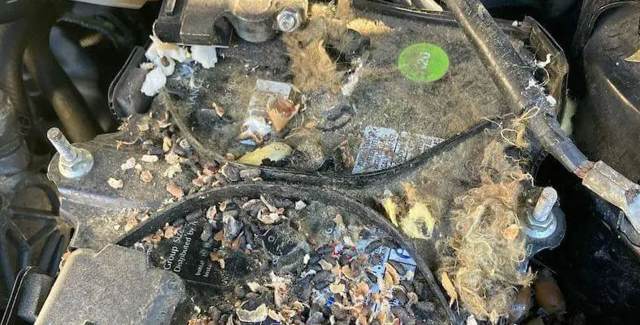
Pests might chew wiring, build nests in vents or appliances, soil upholstery, and bird droppings can ruin the finish.
Keep these unwelcome guests out with the following tips.
Screen and Close All Your Windows and Vents
Your first defense is to ensure that basic barriers are intact. Check that all window screens are free of holes and fit snugly. Inspect the screens inside your roof vents, furnace exhaust, and refrigerator access panel to confirm they’re secure and block entry points for bugs.
Seal and Cover All Possible Entryways
Mice are masters at squeezing through tiny openings. Thoroughly inspect your RV’s underside, particularly around the slide-out seals and any points where plumbing or wiring penetrates the cabin. You can seal any discovered gaps using steel wool (which they dislike chewing), expanding foam sealant, or durable caulk.
Keep Things Clean and Tidy—No Food Left Behind!
This step is absolutely crucial, especially before storing your RV. Remove every single food item—check pantries, the fridge (prop the door open after cleaning), under cushions, and everywhere else.
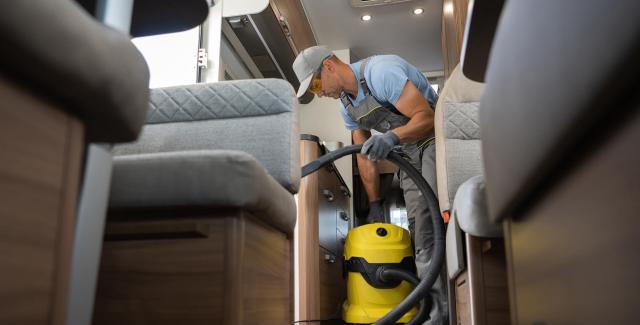
Crumbs and spills are invitations to pests, so give the interior a deep clean, wiping surfaces and vacuuming thoroughly.
Use Deterrents and Traps Cautiously
Some RVers succeed using natural deterrents like peppermint oil (soak cotton balls and strategically place them) or commercially available rodent repellents. Motion sensor lights can also deter larger animals such as cats or raccoons from climbing into the engine bay or other parts of the RV’s underbelly. While traps can be effective, they require regular checking, which might be difficult during long-term storage.
Address Bird Droppings Promptly
Those white marks aren’t just unsightly; bird droppings contain acids that can quickly etch and cause permanent damage to your RV’s paint. Wash them off as soon as you notice them. Here again, parking under a carport or inside a garage greatly minimizes this issue.
Don’t Overlook Your RV Insurance Policy
Taking preventative measures is always the best strategy, but life sometimes throws unexpected challenges our way. Your RV insurance policy serves as that final, important safety net. Don’t just pay the premium and forget it. Take a moment to understand what your RV insurance covers.
- Understand Your Policy: Review your coverage details or speak with your agent to confirm what perils (like hail, hurricane, flood) your RV policy covers. Know your deductible amount, and verify if you have comprehensive coverage for non-collision events.
- Ask About Discounts: Inquire if your insurance company offers potential premium discounts for taking protective measures, such as storing your RV in a secure garage.
- Document Condition: Take clear photos and videos of your RV’s condition (inside and out) before placing it in storage or ahead of predicted severe weather to support future insurance claims.
Keep Your Home on Wheels Safe, Sound, and Ready for Adventure!
That’s it for now. We’ve covered how to protect your RV from:
- Environmental factors like hail, hurricanes, and the scorching sun
- Different weather events
- Pests and critters
It all boils down to awareness and taking consistent, proactive steps.
Things like routine maintenance, using protective covers, having an evacuation plan ready for severe weather, and simply keeping your rig clean are all fundamental parts of ownership.
However, while covers and careful prep work certainly help, the most dependable defense against the toughest, harsh weather conditions comes from providing solid, permanent shelter for your RV.
For the ultimate peace of mind and robust protection against sun, hail, and wind, consider the lasting value and security of a durable metal RV carport or garage.
Visit Alan’s Factory Outlet today and use our 3D builder to get an instant online quote for a custom RV carport or garage that is perfect for keeping your investment safe and your adventures rolling!
